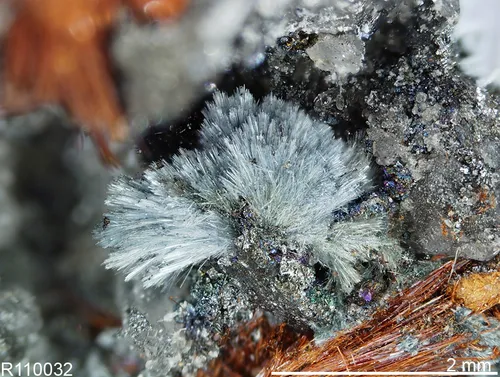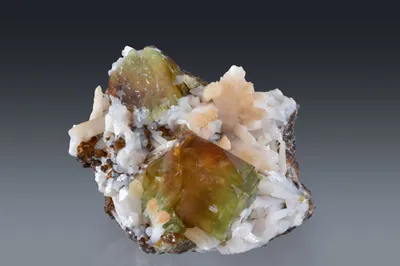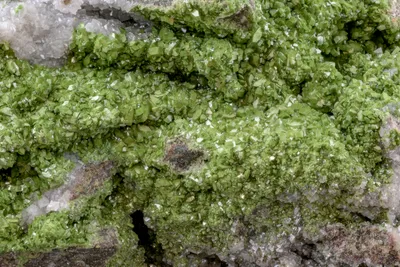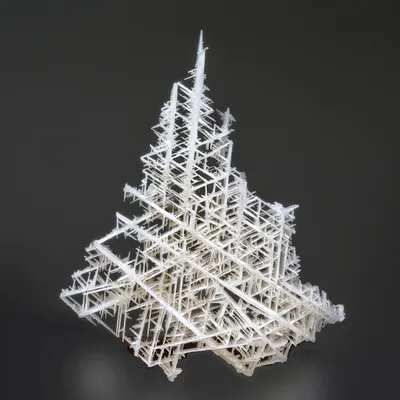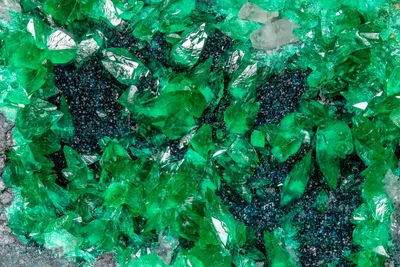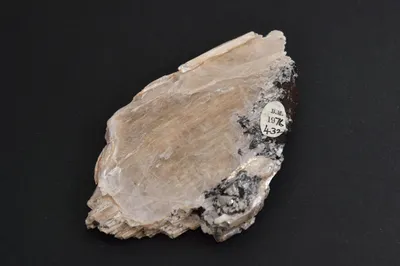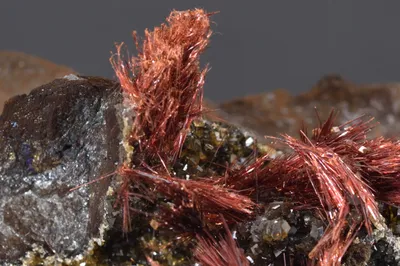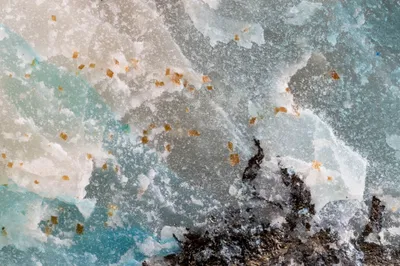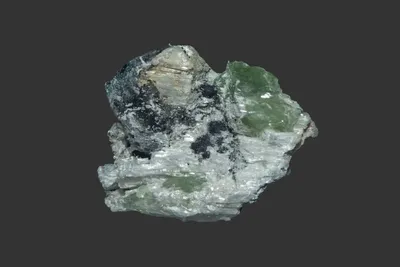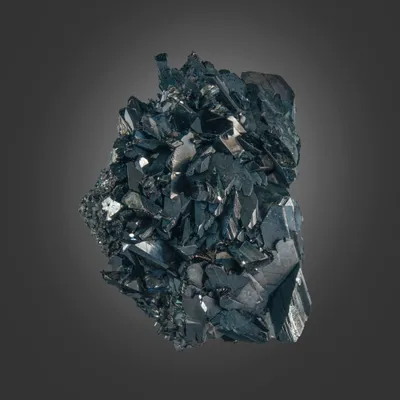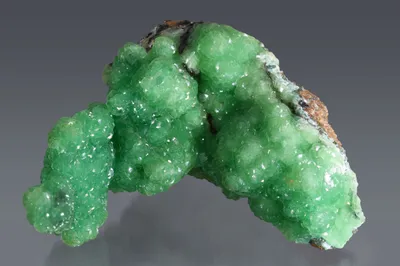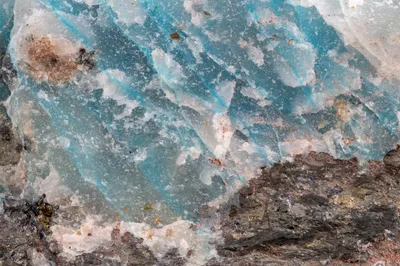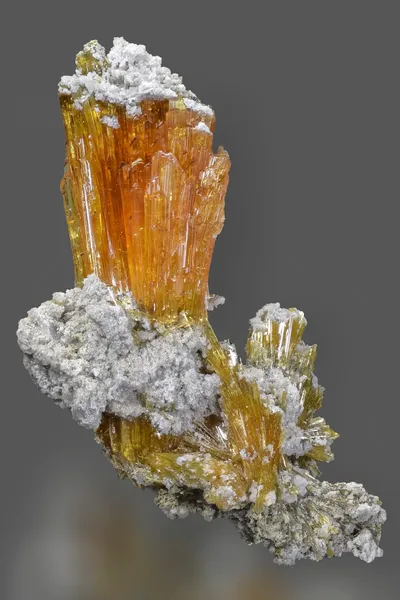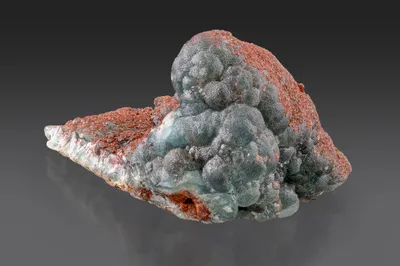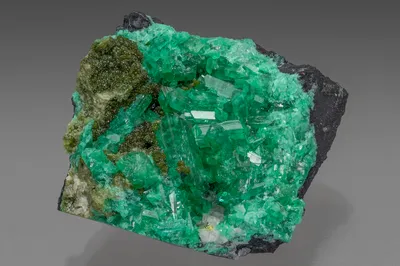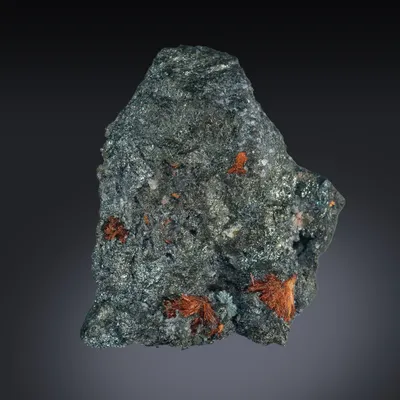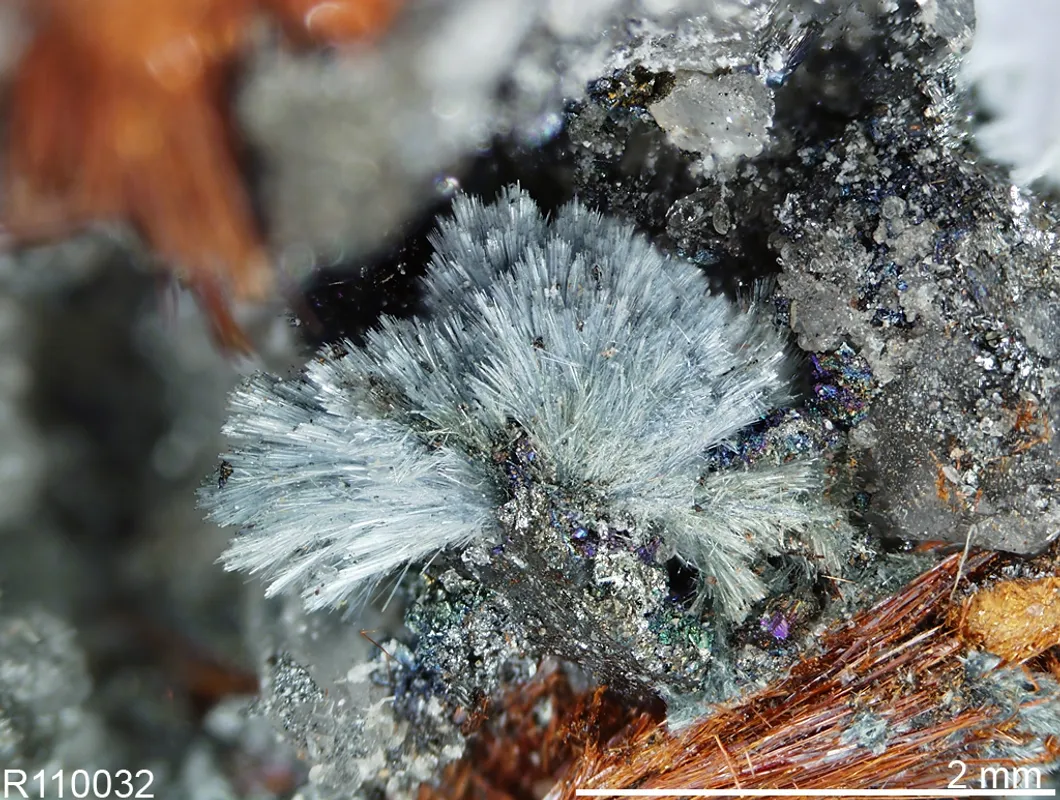
Image Credit: RRUFF Database Project (Lafuente et al. 2015; RRUFF ID 110032)
Mineral Species
Köttigite
Type Locality
No
Composition
Zn3(AsO4)2·8H2O
Crystal System
Monoclinic
Status at Tsumeb
Confirmed
Abundance
Extremely rare
Distribution
Second and third oxidation zones
Paragenesis
Supergene
Entry Number
Species; TSNB196
General Notes
Köttigite from Tsumeb was first observed by Bartelke (1976) as white needle-like crystals (to 2 mm) associated with "… dark-green adamite" (probably zincolivenite). XRD analysis of these white crystals gave a pattern of a vivianite group mineral that was provisionally interpreted as köttigite (G. Hentschel 1975, pers. comm. to W. Bartelke). This material was almost certainly from the second oxidation zone.
Schmetzer et al. (1983) provided a more detailed description of köttigite and, in particular, its occurrence with hörnesite. Keller (1984) noted that these two minerals occur as mixed crystals and that they are visually indistinguishable. Analysis is therefore required for certain identification. Keller (1984) also noted spherules of radiating köttigite crystals, white to pale pink in colour, associated with dolomite and smithsonite.
Keller (1984) considered köttigite to be part of a rare arsenate paragenesis forming under acid to neutral pH conditions and relatively low Eh. Such conditions were ideally developed in cavities in sulphide ore in the second oxidation zone. Keller and Bartelke (1982) included köttigite as a late formed mineral in their paragenetic sequence for the East 9 Pillar on 31 Level (Keller and Bartelke 1982; Table 1 on page 145), which is an expanded version of sequence II/4 proposed by Keller (1977a).
Lombaard et al. (1986) considered köttigite "extremely rare".
Gebhard (1999) described three occurrences of köttigite. (1) as light pink spheres associated with cuproadamite [= zincolivenite]; (2) as "…tiny blue balls…" on leiteite with white adamite, attributed (by Gebhard) to 45 Level in the third oxidation zone, and (3) a similar association on 44 Level in which tiny köttigite spheres were found on leiteite with white adamite and an unidentified mineral to which Gebhard assigned the working name "GS4".
Cooper et al. (2012) noted that dark blue (Cu-bearing) köttigite occurs on the type specimen of ianbruceite. However, studies initiated by the late Bill Pinch indicate that the dark blue "köttigite" associated with ianbruceite may, in fact, be blue legrandite (Bill Pinch, pers. comm. to M. Southwood, 2015). Further investigation is required.
Associated Minerals
adamite; arsenohopeite; austinite; cerussite; claudetite (?); conichalcite; dolomite; fleischerite; gaitite; germanite; helmutwinklerite; hörnesite; ianbruceite; johillerite; keyite; koritnigite; leiteite; legrandite; ludlockite; o’danielite; philipsbornite; prosperite; quartz; reinerite; schneiderhöhnite; smithsonite; stottite; stranskiite; tennantite-(Zn); warikahnite; willemite; zincolivenite
